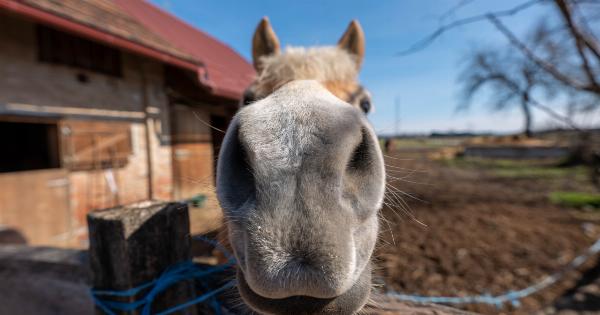The nose is one of the most prominent and delicate features of our face. It not only adds character to our appearance but also serves a critical function in our respiratory system.
However, it is highly susceptible to injuries, and a broken nose can be both painful and aesthetically displeasing. In this article, we will explore ways to prevent nose breaks and offer advice on what to do if you do sustain a nasal injury.
Understanding Nasal Anatomy
Before we dive into prevention strategies, let’s first familiarize ourselves with the basic anatomy of the nose. The nose is comprised of bone, cartilage, and soft tissue.
The bridge of the nose is made up of nasal bones, while the lower portion consists of cartilage. The nostrils are surrounded by delicate tissues and blood vessels.
Common Causes of Nose Breaks
A broken nose, also known as a nasal fracture, occurs when the bone or cartilage of the nose is fractured. While a broken nose can happen in various situations, some common causes include:.
- Physical altercations or fights
- Sports-related injuries
- Accidental falls or trauma
- Motor vehicle accidents
Preventing Nose Breaks
While it is not always possible to avoid accidents, there are some measures you can take to reduce the risk of sustaining a broken nose:.
- Wear protective gear: If you participate in contact sports like boxing, football, or rugby, make sure to wear appropriate protective gear, such as helmets or face masks. These can significantly reduce the force of impact on your nose, minimizing the risk of fracture.
- Avoid confrontations: Try to avoid physical altercations and conflicts whenever possible. Engaging in fights greatly increases the chances of sustaining a nasal injury.
- Improve your balance: Falls are a common cause of nasal fractures. Engaging in activities that improve your balance, such as yoga or Pilates, can help prevent accidental falls and reduce the risk of nose breaks.
- Take precautions while driving: Motor vehicle accidents can lead to severe facial trauma, including nasal fractures. Always wear your seatbelt and ensure your car’s safety features, such as airbags, are in proper working condition.
- Safety-proof your home: Remove any potential hazards in your home that could cause accidental falls or collisions, such as loose rugs or furniture with sharp edges.
- Teach safety measures to children: Kids are more prone to accidental injuries. Educate children about the importance of safety, wearing protective gear, and being cautious to prevent nose breaks.
- Consult a professional: If you participate in activities with a high risk of nasal injury, consider seeking advice from a sports medicine specialist or an otolaryngologist. They can provide personalized recommendations to safeguard your nose.
Recognizing a Broken Nose
Even with preventive measures, accidents can still happen. It is crucial to recognize the signs of a broken nose to seek appropriate medical care. Common symptoms include:.
- Nose pain or tenderness
- Visible deformity or crookedness
- Swelling and bruising around the nose and eyes
- Bleeding from the nose
- Difficulty breathing through the nose
- Nasal congestion
First Aid for a Possible Nose Break
If you suspect that your nose may be broken, follow these steps:.
- Stop any bleeding: Tilt your head forward slightly and gently pinch your nostrils together. Applying an ice pack can also help reduce swelling.
- Seek medical attention: Visit a healthcare professional, such as an emergency room doctor or an ENT specialist, who can assess the extent of the injury and provide appropriate treatment.
- Do not attempt to straighten the nose: You may inadvertently cause further damage by trying to realign the bones or cartilage yourself.
- Follow medical advice: Your healthcare provider may recommend pain relief, prescribe medications or nasal sprays, and, in severe cases, refer you to an otolaryngologist for further treatment.
Treatment Options for a Broken Nose
The treatment for a broken nose depends on the severity of the injury. Some common treatment options include:.
- Nose realignment: In some cases, a healthcare professional may be able to manually realign the bones and cartilage, usually within the first few days of the injury.
- Nasal packing: If there is significant bleeding or swelling, nasal packing may be used to control bleeding and provide support while the nose heals.
- Splinting or casting: A nasal splint or cast may be applied to immobilize the nose and prevent further displacement.
- Surgical intervention: In complex cases or when the injury affects breathing, surgical intervention may be necessary. The surgeon may perform a closed reduction or an open reduction with internal fixation to realign the bones and restore function.
Recovery and Aftercare
Recovering from a broken nose may take several weeks. During this time, it is essential to follow your healthcare provider’s instructions for aftercare, which may include:.
- Using cold compresses to reduce swelling and bruising
- Taking prescribed medications as directed, including pain relievers and antibiotics, if necessary
- Avoiding activities that may further injure or traumatize the nose
- Gently cleaning the inside of the nostrils to prevent infection
Long-Term Implications
In most cases, a broken nose can heal without significant long-term complications. However, it is essential to seek proper treatment and follow medical advice to avoid potential complications, such as:.
- Deviated septum: A fracture may lead to a deviated nasal septum, causing breathing difficulties.
- Chronic sinusitis: If the injury affects the sinuses, it can increase the risk of chronic sinus infections.
- Nasal collapse: Severe fractures may weaken the nasal structure, leading to collapse and cosmetic deformities.
Conclusion
Protecting your nose from breaks should be a priority, given its vital role in both function and aesthetics. By taking appropriate precautions and seeking medical attention when needed, you can minimize the risk of nasal fractures.
Remember, prevention is always better than a cure when it comes to avoiding the pain and inconvenience of a broken nose.































